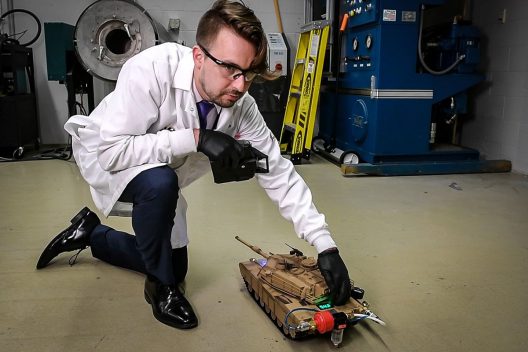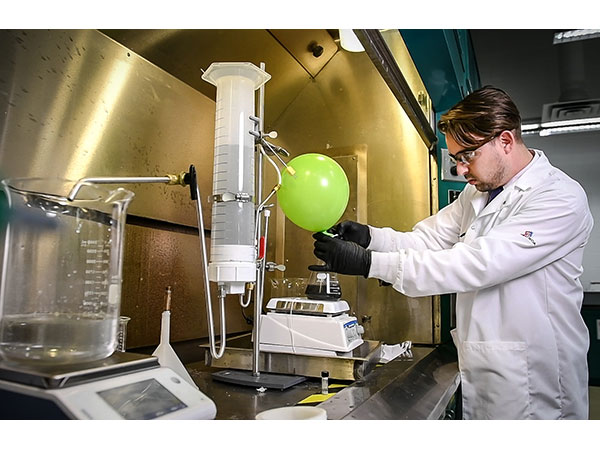Researchers at the U. S. Army’s Research Laboratory at the Aberdeen Proving Ground, Maryland, announced what they call a “groundbreaking discovery – an aluminum nanomaterial they designed produces high amounts of energy when it comes in contact with water, or with any liquid containing water.”
Reportedly “during routine materials experimentation,” the team observed a bubbling reaction when they added water to a nano-galvanic aluminum-based powder. The rapid and spontaneous hydrolysis of water did not require a catalyst came as a surprise to the researchers.
Scott Grendahl, a materials engineer and team leader, explained, “The hydrogen that is given off can be used as a fuel in a fuel cell.” Unlike most water splitting, this is a one-step process, adding water to the special powder. Dr. Anit Giri, a physicist in the Weapons and Materials Research Directorate at the lab, explains, “In our case, it does not need a catalyst. Also, it is very fast. For example, we have calculated that one kilogram of aluminum powder (plus an unspecified amount of water) can produce 220 kilowatts of energy in just three minutes.”
Usually, the catalyst takes time to produce a reaction, and often researchers have to increase the temperature of the materials, electrify things, or use additional chemicals – sometimes toxic. Giri adds that the 220 kilowatts per kilogram is, “…a lot of power to run any electrical equipment. These rates are the fastest known without using catalysts such as an acid, base or elevated temperatures.”
Grendahl comments, “We just take our material, put it in the water and the water splits down into hydrogen and oxygen. There are other researchers who have been searching their whole lives and their optimized product takes many hours to achieve, say 50 percent efficiency. Ours does it to nearly 100 percent efficiency in less than three minutes.”

In a demonstration, Army researcher Anthony J. Roberts powers a radio-controlled toy tank with hydrogen harvested from a unique chemical reaction. Scientists and engineers have found a way to split hydrogen and oxygen quickly and without a catalyst resulting in high amounts of energy. (Photo: U.S. Army photo by David McNally)
The powder could be 3D printed, allowing vehicles to feed off their very structure and self-destruct at the end of a mission. Patrols out on assignment could simply add water to the nano-material powder to recharge mobile devices. Civilians would probably appreciate being able to generate power by just adding water.
Certainly the high power output and ease of use (in a more refined product, probably) would make this a handy way to carry additional potential energy in one’s vehicle or backpack. This could be an exciting development to follow.

